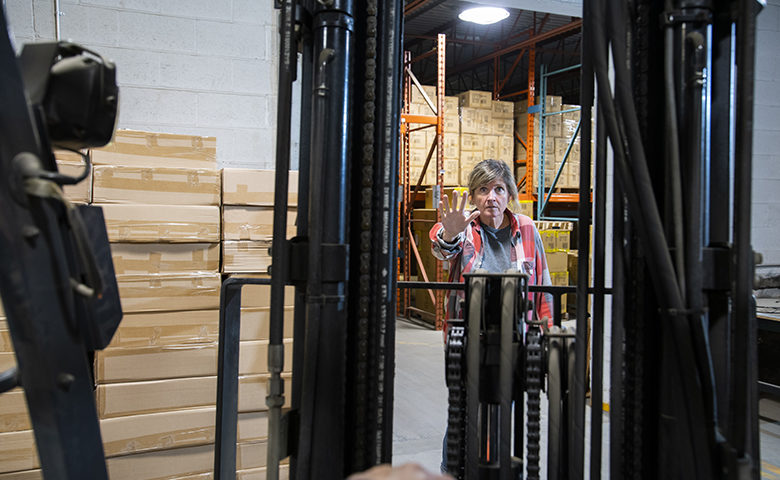Warehouses and loading docks are not highways, so avoiding motorized incidents seems like it should be easier than preventing car crashes. And yet, forklift incidents are common and serious, especially when they involve pedestrians—people don’t have to be hit at 80mph to sustain serious injuries, particularly when a forklift is involved.
The main causes for pedestrians being struck by forklifts include inattention (from the driver or the pedestrian), lack of barriers, inadequate housekeeping (messy floors, lack of clear driving avenues, obstructed view, etc.), and states of mind such as rushing, frustration or fatigue. Inaccurate perception of risk can also make workers more likely to ignore certain rules.
When forklifts are present in the workplace, employers need to first follow government regulations and ensure engineering controls and administrative controls are in place. But safety also relies on providing inspiring and memorable training. Although regulations don’t stipulate that training needs to be motivating, smart leaders know that the more memorable the training is, the more likely workers are to be engaged and remember it later on. And when there’s a safety-focused culture that helps employees understands how human factors fit in the organizational framework, it will ensure workers’ active participation in safety
So when it concerns forklifts, pedestrian safety depends on the following:
- Engineering solutions and administrative controls
- Everyone’s understanding of human factors
- Training and culture
Engineering and housekeeping problems
The layout and organization of the workplace and its materials can be a big contributor to forklift incidents involving pedestrians.
For example, a lack of clear driving avenues, untidy floors, objects left in the way of the forklift, and obstructions overhead can all be significant hazards. Creating clearly marked forklifts-only aisles can be a big step towards increased pedestrian safety.
It’s even better if the aisles can be separated from the rest of the workspace by barriers. Specific aisles reserved for forklifts can be extremely helpful in areas with a lot of forklift traffic.
Once the aisles and barriers are set up, it’s important to develop a system for ensuring that all floors are clear of obstacles and no objects create blind spots for drivers or obstruct their view from above or below.
This step should become a habit for all the employees in the area, and relevant training and refreshers are likely necessary. Leading by example and recognizing employees who demonstrate safe actions will also contribute to behaviors like this becoming the new norm.
States of mind
Workers’ states of mind can affect their performance and safety and may increase their chances of making a mistake. A forklift driver who is rushing or fatigued might not scan their path as thoroughly as they should. They might also get easily distracted, choose to cut corners, or ignore or skip certain safety-related steps to save time. The results could be deadly.
The same is true for complacency. When workers have been operating a forklift for a long time, their perception of risks decreases despite the dangers associated with that job remaining the same.
On the other side of the equation are pedestrians who could be walking around the work area while checking their phone or reading paperwork, which means that they are no longer scanning their path for forklifts. And if they’re rushing, they could choose to cross or use the forklift-only aisles to save time. It’s important to remember that pedestrians are also affected by potentially dangerous states of mind.
Everpresent human factors can lead to some serious outcomes, which is why companies should ensure that workers know how to recognize when their states of mind affect their personal safety. Supervisors and leaders should also know when and how to intervene when they see that employees are negatively affected by their mental state.
Training and culture
Forklift training covers a variety of topics and involves different skills. Some of it relies on safety knowledge and organizational adherence to regulations, while other aspects of it will focus on safe behavior. But all of it should be clear and engaging to help employees retain the knowledge and consciously use it every day.
Leaders would do well to remember that aspects of forklift safety should be included in the training and toolbox talks dedicated to forklift issues provided to employees who don’t operate the trucks but who may come in contact with them around the workplace.
Refresher sessions should be regularly provided to all employees and workers’ adherence to rules should be monitored to see if additional training or informal coaching is needed. If so, the leadership should consider the workplace culture and the reasons why workers ignore or forget the rules. It’s also worth introducing human factors training if the company forklift training doesn’t already directly deal with employees’ states of mind.

